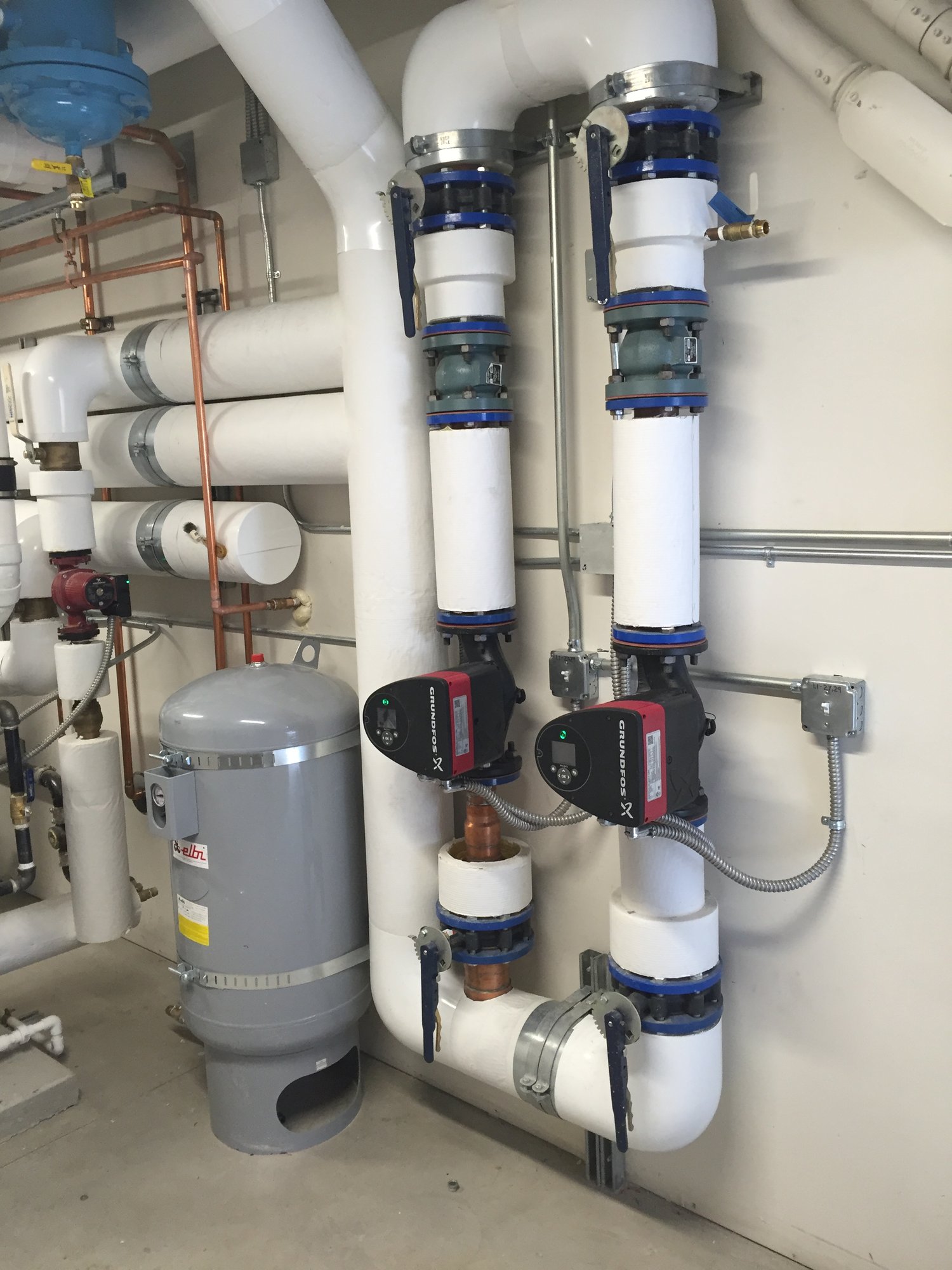ECM Pumps:
Electronically commutated motor (ECM) pumps are an efficient and cost-effective choice for use in hydronic heating and cooling systems. These pumps use advanced technology to precisely control the flow of water, ensuring optimal performance and energy efficiency.
One of the main benefits of using ECM pumps is their ability to operate at variable speeds. This is achieved through the use of a variable speed drive (VSD), which allows the pump to adjust its output to meet the exact demand for heating or cooling within a building. By operating at the optimal speed for the specific demand, ECM pumps can reduce energy consumption and lower operating costs.
In addition to the variable speed capability, ECM pumps are also more energy efficient than traditional pumps due to the use of an ECM motor. The ECM motor is a type of brushless DC motor that uses permanent magnet technology, which is more efficient than traditional induction motors. It also has a low power factor, which means that it uses less electricity to generate the same amount of power.
ECM pumps offer several other benefits for use in hydronic heating and cooling systems, including their low noise levels, compact size, and durability. They are also relatively low maintenance, with a long lifespan and minimal need for repairs or replacements.
Overall, ECM pumps are a reliable and efficient choice for use in hydronic heating and cooling systems. With their ability to operate at variable speeds, energy efficient ECM motors, and other benefits, these pumps can help to reduce energy consumption and operating costs while providing reliable performance.
ECM pumps are produced by a number of different manufacturers, including Grundfos, Wilo, Taco, and Bell & Gossett. Proper selection and setup of these pumps is critical for maximizing efficiency.
If you require help sizing, selecting, or setting up ECM pumps or you are interested in mentoring/coaching for engineers, please reach out to Efficient Mechanical Engineering Systems. Thank you, and remember, “Sustainability starts with Responsible Design.”



Comments ()